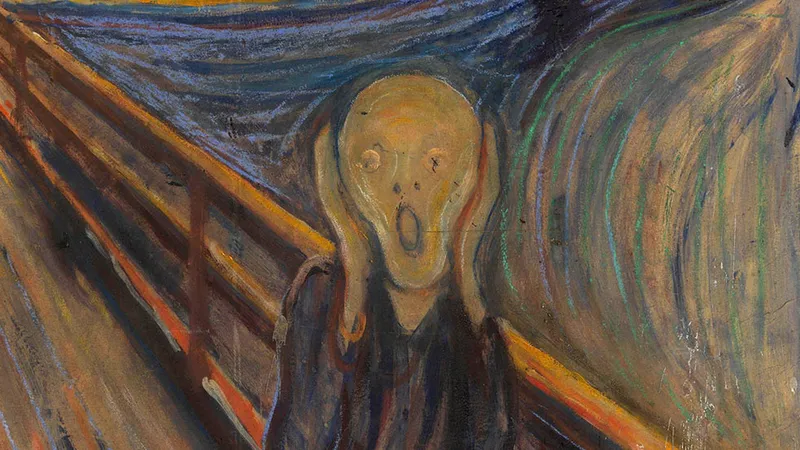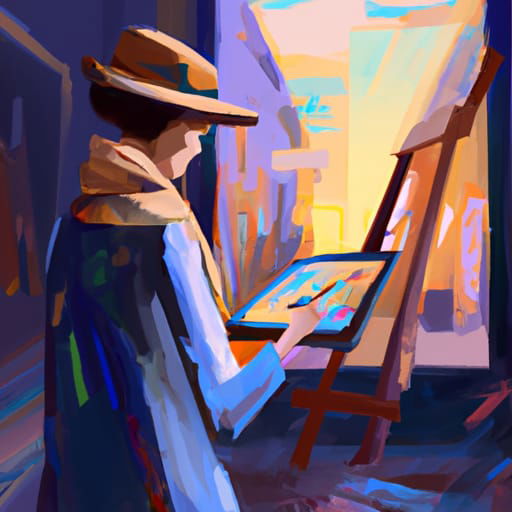Art: The Scream by Edvard Munch: More Than Just a Haunting Face
Art: The Scream by Edvard Munch: More Than Just a Haunting Face
Discover the layers of history, emotion, and intrigue behind one of the world's most iconic paintings, Edvard Munch's "The Scream".
Edvard Munch's "The Scream" has permeated global consciousness to the extent that it's almost a visual shorthand for existential dread. Yet, beyond its widely recognized anguished face, the painting harbours a plethora of lesser-known facts, tales of theft, and the surprising reality that it's not a unique masterpiece but exists in multiple versions. Delve into the colourful chaos behind this enduring symbol of modern anguish.

Image Source: Britannica.com, click for more information
Introduction
Edvard Munch's "The Scream" is one of those images so deeply embedded in the cultural zeitgeist that it almost feels like it's always been there. Sure, it might be a go-to emoticon when describing one's Monday blues, but trust me, darling readers, there's a lot more to this painting than just a haunted face.
Lesser-Known Facts
- Sunset or Polluted Skies?: The vivid, almost hallucinogenic sky in the painting may not be just a representation of the setting sun but possibly an illustration of the sky's appearance following the 1883 Krakatoa volcano eruption.
- Munch’s Own Anxiety: It is said that Munch's own bouts of anxiety and hallucinations influenced the making of the piece. Talk about art imitating life!
- Diverse Media: It's not just an oil painting. Munch experimented with various media including tempera, oil, and pastels.
- Existentialism's Poster Child: The painting predates Jean-Paul Sartre’s existentialism, but many believe that it is a visual encapsulation of the existential dread concept.
- Homage to 'The Shout': The original title in Norwegian, 'Skrik', can also be translated as ‘The Shout’, which is a nod to a poem Munch admired.
Tales of Theft
Would you believe it, this iconic piece of art has been pinched not once, but twice! First, in 1994, it was stolen from The National Gallery in Oslo and later recovered. Then again in 2004, another version was snatched from the Munch Museum, also in Oslo. Both times the painting was recovered, but the ordeals added a layer of James Bond-esque drama to its history.
The Multiple Versions
Hold onto your knickers!
Edvard Munch created four different original versions of "The Scream."
- 1893, Tempera on Cardboard: The most famous one, housed in The National Gallery in Oslo.
- 1893, Tempera and Pastel on Cardboard: Also in Oslo, but at the Munch Museum.
- 1895, Lithograph: This one allowed "The Scream" to be mass-produced, so you could say it was the 19th-century version of going viral.
- 1895, Tempera on Cardboard: This one belongs to a private collector and tends to only make public appearances on rare occasions. Think of it as the painting equivalent of a celebrity recluse.
Additionally, there are various other copies and adaptations made by Munch himself and even more by other artists who have been influenced by this iconic piece. But as for the originals, there are four main ones that carry the emotional weight and artistic legacy of Munch's masterpiece.
Conclusion
"The Scream" is a painting replete with hidden layers, historical curiosities, and tantalising tales of crime. While its face might scream 'despair', the stories behind it shout 'intrigue' and 'complexity'. Whether you are an art novice or a certified connoisseur, this iconic masterpiece offers something for everyone, much like a fine wine or a complicated riddle.
There we have it, folks—a rollercoaster journey through Munch's haunted but utterly fascinating world. Next time you use "The Scream" to emote your existential despair, remember you're not just sending an emoji; you're sharing a piece of complex and multi-layered history. Cheers!

Art


